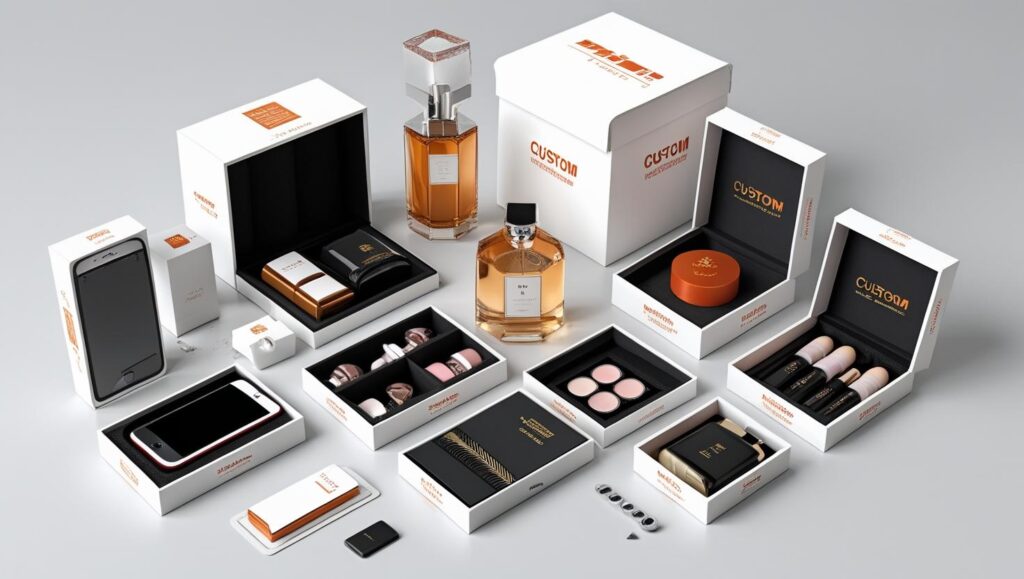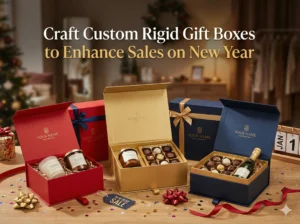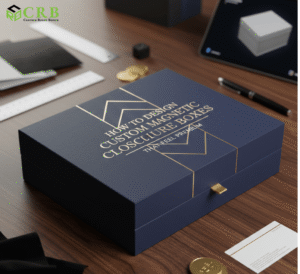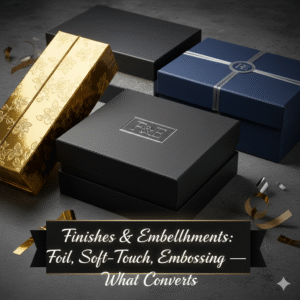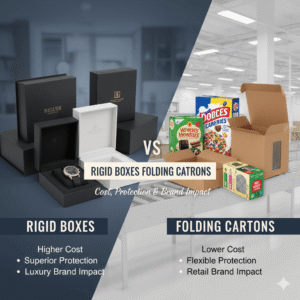The U.S. packaging market reached roughly $107.6 billion in 2024, and online sellers face big costs when items arrive damaged. About one in five ecommerce returns happens because a product shows damage on arrival, and disrupted deliveries create real losses for retailers and makers. Notably, better packaging cuts those losses, protects brand trust, and lowers replacement expenses. This article explains how printed Rigid Boxes give firm protection, lift perceived value, and reduce returns while fitting into practical sustainability choices.
6 Reasons Custom Rigid Boxes Boosts Safety and Brand Appeal
Thin folding cartons compress and fold when carriers stack boxes. In contrast, rigid packaging boxes keep their form and prevent the product from shifting. That stability makes it possible to add tailored foam or molded trays that lock each piece in place. As a result, fragile items such as glass, plated metal, and fine ceramics arrive in better shape. Retailers and brands avoid costly replacements and refund headaches because the packaging does more than look good — it defends the product while it moves through many hands.
1. Lower Returns and Protect Margins
Many brands pay close attention to packaging because damage hurts profits. Using a box that matches the product reduces movement and stops common shipping failures. That approach cuts return rates and limits time staff spend on refunds and restocking. Beyond cost savings, reduced damage protects a product’s reputation and keeps review scores higher. When a brand chooses a tailored box it controls both protection and presentation, which improves the whole customer path from order to ownership.
- Reduce damage in transit by minimizing movement and shock.
- Cut return processing and restocking costs.
- Protect expensive finishes like paint, plating, and glass.
- Avoid refunds, chargebacks, and negative online reviews.
2. Design and Branding Protects and Sells
Good box design combines strong structure with visual cues that match product value. Brands use soft-touch wraps, foil stamps, and neat closures to convey quality. Moreover, a precise tray or foam insert keeps parts safe and looks tidy when the customer opens the box. A strong package signals care, so buyers feel confident about the item inside. In turn, that confidence leads to repeat purchases and social shares. Collapsible Gift Boxes let brands control this whole moment—protection plus a polished presentation that supports sales.
- Use soft-touch wraps, foil stamps, and custom inserts to match product quality.
- Tailor box size and trays for a one-to-one fit to reduce filler and movement.
- Include branded tissue, welcome cards, or product care guides to extend value.
- Use the box exterior as a controlled first impression—premium boxes raise perceived quality.
3. Materials and Finishes that Prevent Damage
Pick the right core board, lining, and filler to build a shock-absorbing system, not just a wrapper. Greyboard or chipboard provides bulk and strength. Add foam, EVA, or molded pulp inserts to cradle parts precisely. Laminations and wrapped edges protect against scuffs and moisture. For hinges and lids, magnetic closures and reinforced corners stop accidental pops and corner blows. Also, match the liner and adhesive to the travel profile: some inks and glues hold up better in varied humidity and rough handling.
4. Sustainability and Recyclability
Brands can meet eco goals without giving up protection if they choose materials wisely. Recycled greyboard and paper-based liners support curbside recycling and lower raw-material impact. Equally important, designers can avoid hard-to-recycle films and plastic windows that complicate disposal. Certified board, low-VOC adhesives reduce environmental trade-offs. There is less waste to consider with smart sizing a box the right size needs less filler so the shipping volume gets reduced meaning transport emissions get lowered overall.
- Many boxes are composed of recycled greyboard and fit the paper recycling stream.
- Paper-based inserts and liners improve curbside recyclability.
- Brands can choose FSC-certified board and low-VOC adhesives.
- Smart design reduces waste by right-sizing boxes to the product.
5. Cost Vs Value
It costs more than a simple folding carton, but the math often favors quality packaging for mid- and high-ticket items. Small jewelry boxes show low per-unit costs at higher runs, while larger electronics boxes carry higher unit costs that often justify themselves through fewer replacements. Add up the savings from returns that didn’t happen, warranty work that wasn’t needed, and repeat purchases that came in. Over time, solid packaging helps keep margins safe and gives the brand space to hold prices steady next to rivals who slash spending on boxes.
- Typical box costs vary by size, finish, and run quantity—expect higher costs for premium finishes.
- Calculate savings from fewer returns and lower replacements.
- Consider lifetime brand value: better packaging helps justify higher retail prices.
- Treat Custom Invitation Boxes as an investment that reduces recurring costs.
6. Improve The Unboxing Experience and Customer Loyalty
A careful unboxing gives customers a calm, satisfying moment that they remember and share. When a product arrives snug in a neat tray, the buyer feels confident about its quality. That moment leads to photos, social posts, and word of mouth that cost the brand nothing. Also, a positive first touch reduces customer questions and complaints. Over time, consistent unboxing that protects the product builds loyalty and lifts average lifetime value for each customer.
Tips for Choosing the Right Box for Your Product
Measure product dimensions along with any accessories and packaging materials. Ask suppliers for sample boards, and test-fit a prototype with the actual product. Run small drop and vibration tests to see how the assembly behaves in transit. Check whether the supplier offers collapsible rigid options to save storage space and reduce shipping costs to your warehouse. Finally, require eco options and print proofs so you confirm the finish, color, and structural fit before mass production.
Manufacturing and Lead Time | What to Expect
Manufacturers cut, glue, wrap, and finish rigid shells in separate steps that take more time than standard cartons. Expect longer setup and slightly higher minimums for specialty laminations and complex inserts. Many suppliers like CRB offer lower min or short run rigid options now but plan ahead for holiday or peak launches to avoid rush fees. Ask the supplier for lead time windows for samples, prototypes, and full production so you can line up marketing and shipping schedules without surprises.
FAQs
How much do they cost?
Costs vary by size, finish, and order quantity. Small jewelry boxes often show low per-unit costs at scale, while large, high-finish boxes cost more. Get supplier quotes and sample proofs to see the real per-unit price for your runs.
Do they protect products better than corrugated boxes?
Rigid boxes resist crushing and keep shape, which helps fragile or high-value items. Corrugated works well for outer shipping cartons and cost-sensitive bulk shipments. Use both strategically: rigid for the product layer and corrugated for outer shipment.
Can they reduce damage-related returns?
Yes. A well-designed box with fitted inserts and firm walls cuts movement and shock. Brands that test prototypes often see lower damage rates and fewer refunds.

